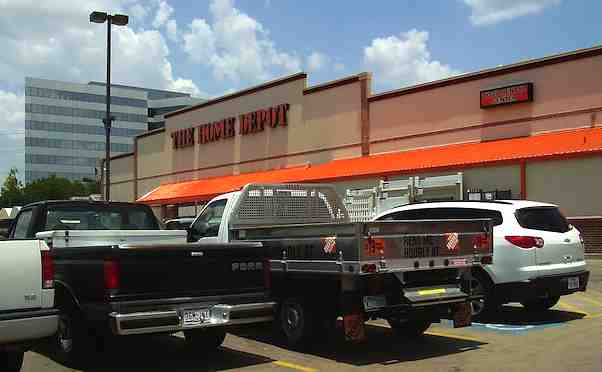
The Home Depot’s organizational culture sets the context for individual and group behaviors in the company. A firm’s workplace culture is the system of traditions, habits, core values, and expectations that affect the behaviors and work performance of employees. In Home Depot’s case, employees exhibit the company culture to maximize customer satisfaction. As the biggest home improvement retailer in the United States, the firm uses its corporate culture to maintain an attractive environment where employees are motivated and where customers feel welcome. Home Depot’s organizational culture is a key factor that differentiates the company from its competitors.
Home Depot’s organizational culture empowers employees to fulfill the company’s goals for high-quality service as a competitive differentiator. This business culture enhances competitiveness against Lowe’s, Menards, True Value, and Ace Hardware, as well as Walmart, Costco, and Amazon. These retailers present competitive challenges, as noted in the Five Forces analysis of Home Depot, which illustrates the aggressive behavior of companies in the industry. The work cultures of Whole Foods, Aldi, and other retailers that do not directly compete with Home Depot influence employees’ expectations regarding work culture in home-improvement retail business.
Features of Home Depot’s Organizational Culture
Home Depot’s organizational culture is a major factor that supports success and leadership in the market. The company’s leaders recognize this relationship and continue to commit to a high-performance culture. The features of Home Depot’s organizational culture are as follows:
- The inverted pyramid
- Excellence in service
- People-centricity
- Collaboration
The Inverted Pyramid. Home Depot’s inverted pyramid presents the prioritization of stakeholders in the company’s strategies and organizational culture. The customers are the top priority. Next are the front-line associates. Field support and corporate support are in the middle. The CEO comes last. In a way, the company culture addresses human resources starting from the bottom level toward the top level of Home Depot’s organizational structure (business structure). In this prioritization, Home Depot’s work culture ensures that corporate values are inculcated among all employees, especially the front-line workers at the stores. In addition, this feature of the organizational culture highlights the value and contributions of front-line personnel, translating to Home Depot’s managerial approach that recognizes ideas, actions, and other contributions from subordinates.
Excellence in Service. Home Depot’s organizational culture emphasizes excellent service. The company achieves high-quality service through training programs and a human resource strategy that hires field experts, like carpenters and plumbers. These experts provide expert advice when customers make purchase decisions. This characteristic of the corporate culture enhances competitiveness and is integrated into Home Depot’s generic strategy and intensive growth strategies. The company culture provides a social system that supports competitive advantages and business growth in the home improvement retail market.
People-Centricity. In relation to the inverted pyramid, Home Depot’s organizational culture also involves a people-centric approach to work. All employees are encouraged to establish productive and enjoyable work relations and employee-customer relations. This feature of Home Depot’s business culture relates to the company’s emphasis on high-quality service. This support for human resource development links the corporate culture to Home Depot’s mission and vision, in terms of workers’ productivity and effectiveness in satisfying the goals of the business organization. Also, this cultural trait helps align the company’s human resource management programs with the external trends shown in the PESTEL/PESTLE analysis of Home Depot, such as the sociocultural factors affecting the home improvement market.
Collaboration. Home Depot’s organizational culture supports a community approach among workers. For example, the company encourages store employees to perform as a team. This characteristic of Home Depot’s organizational culture creates higher human resource effectiveness from collaborative efforts, instead of relying on separate individual employee contributions only. This cultural trait reinforces the core competencies shown in the SWOT analysis of Home Depot. The collaborative workplace culture motives employees to support each other to solve problems and make the retail business more effective.
Implications of Home Depot’s Culture
Home Depot’s organizational culture empowers the company to achieve its service quality goals. Excellent service is a determinant of the company’s success, especially when considering the saturation of the retail market. Home Depot’s culture also emphasizes support for employees, which is critical in ensuring competitive advantage based on human resource capabilities. Moreover, the emphasis on collaboration in the workplace culture influences work efficiencies and productivity, as well as the related performance of Home Depot’s operations management. Based on this factor, the business culture affects the productivity of human resources at the company’s stores.
References
- Reis, A. D., & Veríssimo, J. M. C. (2023). The journey of culture and social responsibility and its relationship with organizational performance: Pathway and perspectives. Journal of Organizational Effectiveness: People and Performance, 10(1), 22-42.
- The Home Depot, Inc. – Diversity, Equity & Inclusion.
- The Home Depot, Inc. – Form 10-K.
- The Home Depot, Inc. – Our Values.
- U.S. Department of Commerce – International Trade Administration – Retail Trade Industry.